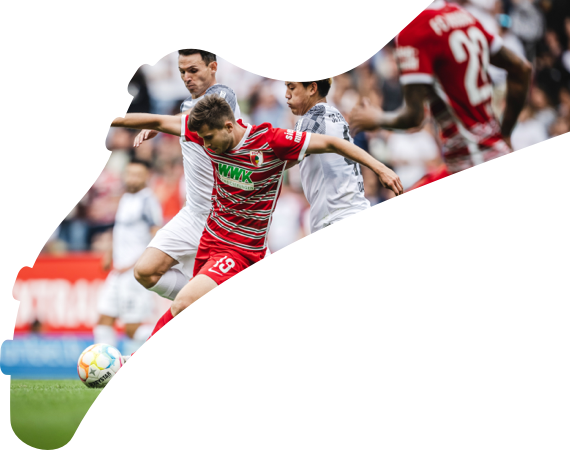
50 years of Bundesliga 2: A history of Germany's second division
Bundesliga 2's history is a rich one, with German football's second tier proving to be the launching pad for clubs and players to go on and reach the highest level of the game.
A decade on from the formation of the Bundesliga at Dortmund's Westfalenhalle on 28 July 1962, club representatives sign off on a new second division aimed at bridging the gap between the professional and amateur game. This time, in Frankfurt on 30 June 1973, a 20 team, two-division Bundesliga 2 was announced for the 1974/75 season.
Those conversations were previously held around the same time of the Bundesliga's founding, but without getting off the ground. The success of Germany's new top-flight, however, was able to swing opinion, paired with the increasing gap opening up between the soaring Bundesliga and the five division Regionalliga which was, until then, feeding the pointy end of the footballing pyramid.
It wasn't all smooth sailing, though, especially when it came to deciding which teams should make up the new divisions. As with the founding of the Bundesliga, various criteria determined the first 40 clubs in Bundesliga 2, who were split evenly across North and South leagues. In addition to sporting success over the previous five years, technical and economic requirements also played a role in allocating the teams.
In sporting terms, SV Alsenborn, coached by Kaiserslautern legend and 1954 World Cup captain Fritz Walter, would undoubtedly have qualified. However, the licence was then refused due to the inadequacies of their pitch and economic uncertainty. Instead, FC Saarbrücken were awarded the licence and legal proceedings dragged on until 20 July 1974 - just under two weeks before the start of the league.
When Bundesliga 2 did finally get underway, on 2 August 1974, it was Saarbrücken who then opened the league with a home fixture against Darmstadt. Nikolaus Semlitsch, who had previously played three seasons in the Bundesliga with Kickers Offenbach, entered the history books after 18 minutes as the first goalscorer in the history of the second division and his goal for the hosts proved to be the winner.
Saarbrücken's midfield was led by a certain 21-year-old by the name of Felix Magath, whose 17 goals led Saarbrücken into the Bundesliga in 1976 before making a move to Hamburg. He became a three-time German champion with HSV, won the UEFA Cup Winners' Cup and scored the golden goal against Juventus in the final of the European Champions Cup - the predecessor to the Champions League - in 1983. The dynamic midfielder also became European champion with the German national team in 1980, establishing Magath as the first true German legend created in Bundesliga 2.
Alongside Magath, the heavyweight figure of Horst Hrubesch was a key player in HSV's most successful era and was also forged in the second-tier. He was relegated to Bundesliga 2 North with Rot-Weiss Essen in 1977, where he plundered 41 goals in 35 appearances over the course of the 1977/78 campaign. To this day, he shares the record for the most goals in a single season of German professional football with Robert Lewandowski, albeit there were more games played across the 20-division second drop back then.
After Hrubesch followed Magath to HSV, he also won the European Championship in 1980, scoring twice in the final as Germany beat Belgium 2-1. That game created folklore in the legendary quote from Karl-Heinz Rummenigge, who shouted to a photographer when the score was 1:1: "Focus the lens on Hrubesch, it's about to go bang." Rummenigge then crossed to Hrubesch, who headed home.
The German national team's next major title also had its roots in Bundesliga 2. Rudi Völler first played three years there with Kickers Offenbach, then was relegated from the Bundesliga with 1860 Munich, where he almost got the Lions back to the big time in 1981/82 with 37 goals - a haul which remains the best in the second division since it moved to a single league in 1981. Völler wouldn't remain in Bundesliga 2 for long and became a world champion in 1990. His strike partner, Jürgen Klinsmann, similarly earned his stripes in Bundesliga 2, so too did fellow World Cup winners Olaf Thon and Frank Mill.
Völler won the penalty for the late Andreas Brehme to convert in the final against Argentina, and Germany's match-winner in Rome was another product of Bundesliga 2. Brehme made his debut as a 19-year-old for Saarbrücken in the second division and immediately established himself as a regular in the 1980/81 campaign. After just one season, he moved to Lautern and was part of the side that not only immediately bounced back to the Bundesliga in 1996/97, but also became German champions the following season - a feat not matched before or since by a promoted team.
The coach of that legendary Lautern outfit was Otto Rehhagel, who took over Werder Bremen in their first go in the second division. Rehhagel led the club back into the Bundesliga and moulded the Green-Whites into a top team. Rehhagel also laid the foundations for a record that Werder still hold today; in the 76 second division games in the club's history, they claimed 161 points at an average of 2.12 per game - something no other team has ever matched.
Greuther Fürth, meanwhile, sit top of the all-time table, having not only played the most games (1,194 at the end of the 2023/24 season) but also collected the most points (1,758). Willi Landgraf (508) has the most appearances in the league, and Simon Terodde (177) the most goals, while Friedhelm Funkel (six) has been promoted the most times as an individual - twice with Uerdingen (1992 and 1994), and once each with Duisburg (1996), Cologne (2003), Eintracht Frankfurt (2005) and Fortuna Düsseldorf (2018). The club record of eight promotions is shared by Nuremberg and Arminia Bielefeld.
Reunification in 1990 presented further organisational challenges and, in 1991/92, the league was initially divided into northern and southern divisions with twelve teams each, which were then combined in a promotion and relegation round. In 1992/93, the league returned to a single division with 24 teams, was reduced to 20 in 93/94 and since the 1994/95 season it has taken on its current form with 18 clubs.
As changeable as the format may have been, spectator numbers and media interest have risen significantly the past two decades. In the 2016/17 season, Bundesliga 2 broke the six million stadium attendance mark for the first time - which boils down to an average of 20,000+ fans attending each game - and it is now one of the highest attended leagues in the world.
The passion of the supporters and history-making efforts of the players across all 128 different clubs to have featured in Bundesliga 2 are what make the league so special. All of them have helped write Bundesliga 2's success story and its 51st edition in 2024/25 will bring yet more drama to the packed out stadiums week-in, week-out.
Related news

Frankfurt in talks with Man City over Marmoush transfer
Eintracht's talisman and top scorer this season was not in the squad for the team's Matchday 18 meeting with Dortmund.

Stuttgart produce statement win over Freiburg
Stuttgart gave an exhibition in attacking football as they cruised to a commanding 4-0 victory over Freiburg.

US Soccer Players in Germany: 2024/25 update
How did the likes of Joe Scally, Gio Reyna and Jordan fare in the latest round of Bundesliga fixtures?


